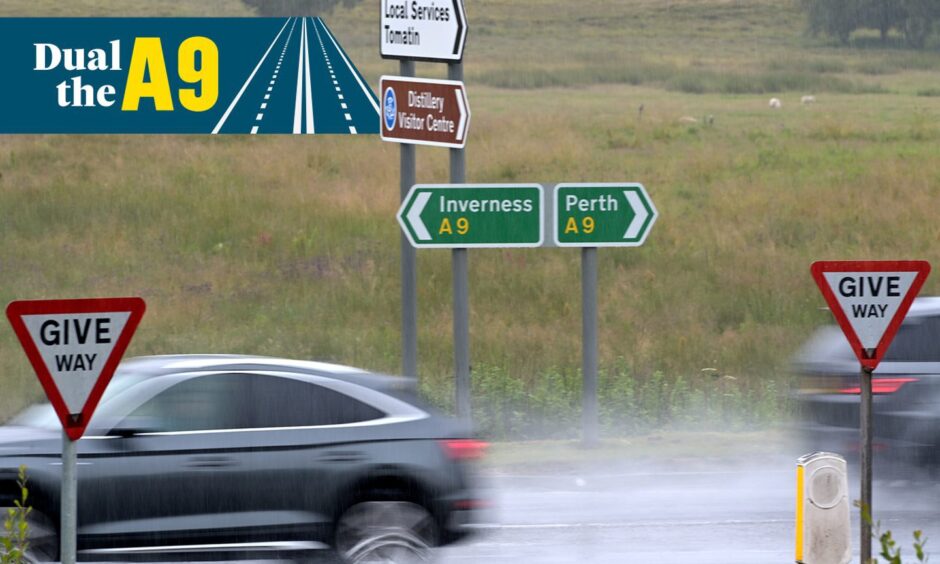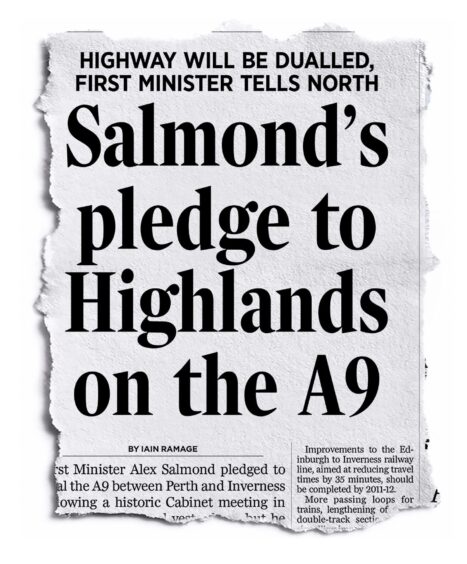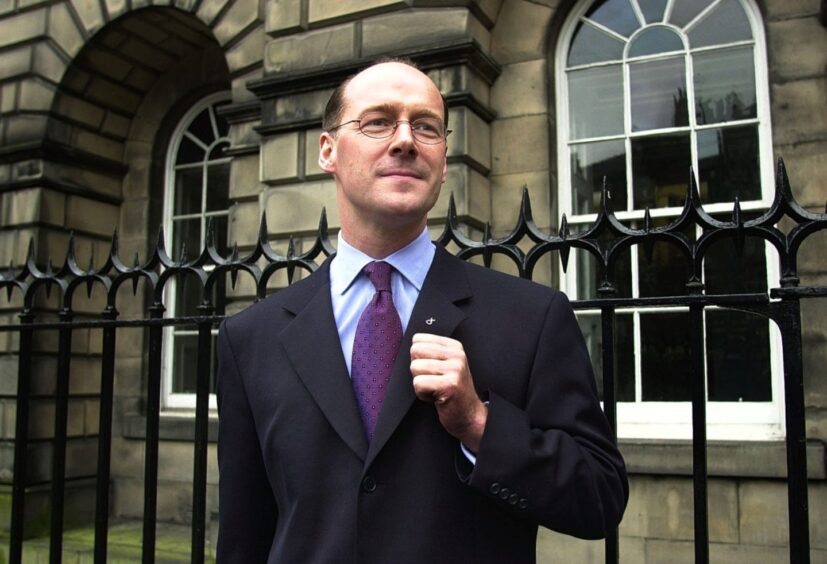
Alex Salmond’s top team of government ministers discussed “significant” engineering challenges which would need to be met to dual the A9, hours before he made an historic pledge to deliver the project in 2008.
In what would become a landmark day for the Highlands, members of the SNP administration met at Inverness Townhouse on August 5.
It was the first time a government cabinet meeting had taken place there since 1921, when Prime Minister Lloyd George gathered his ministers in the same room.
Perhaps capitalising on the moment, Mr Salmond used the opportunity to announce the A9 would be dualled by 2025 – a date already ditched as unattainable.
But official papers made public for the first time today reveal how the decision followed a meeting where ministers were warned the project would be “hugely expensive” and require significant engineering concerns to be overcome.
Minutes from the meeting show how John Swinney, who was finance secretary, had warned how challenging the promise would be to fulfill.
‘This might not be possible’
The conclusions from the meeting add: “Mr Swinney said that there was continuing concern over the number of fatal accidents on stretches of the A9 from Perth to Inverness.
“He said that the Strategic Transport Review Project (STRP), which would be presented to cabinet in October, would outline plans to make significant safety improvements to the A9, amongst other things.
“He said that, while dualling of the A9 remained the overarching policy intention, this might not be possible in some places due to difficulties with land purchase or significant engineering concerns.”
Elsewhere in the papers, Mr Swinney said such a project would be “hugely expensive”.
The subsequent strategic transport projects review presented to cabinet in October also lacked detail about exactly how the full Perth to Inverness route could be completed.
Setting out transport objectives between 2012 and 2022, only a small section of the road was scheduled for the delivery.
The most significant chunks were listed as being in either the development or design phase.
The reasoning set out by Mr Swinney at the 2008 meeting foreshadowed many of the excuses given by present-day SNP ministers who admitted earlier this year the promise could not be delivered.
Announcing the delay in February 2023, transport minister Jenny Gilruth blamed the pandemic alongside statutory approval processes, market capacity, supply chain availability and the availability of funding.
Mr Salmond characterised the broken promise as a “very substantial betrayal” of the Highlands.
Pointing the finger at his successors, he said: “What happened after 2014 was that the Scottish Government lost its way on the A9.
“The pace went from full steam ahead to glacial.”
Just before Christmas, current transport secretary Mairi McAllan announced the road will now take until 2035 to be completed.
Read more about the A9’s twists, turns and delayed timetables here.
- New timetable published in full as Perth-Inverness upgrade given delayed 2035 finish date
- Campaigners and locals unite in disbelief at 2035 completion date



Conversation